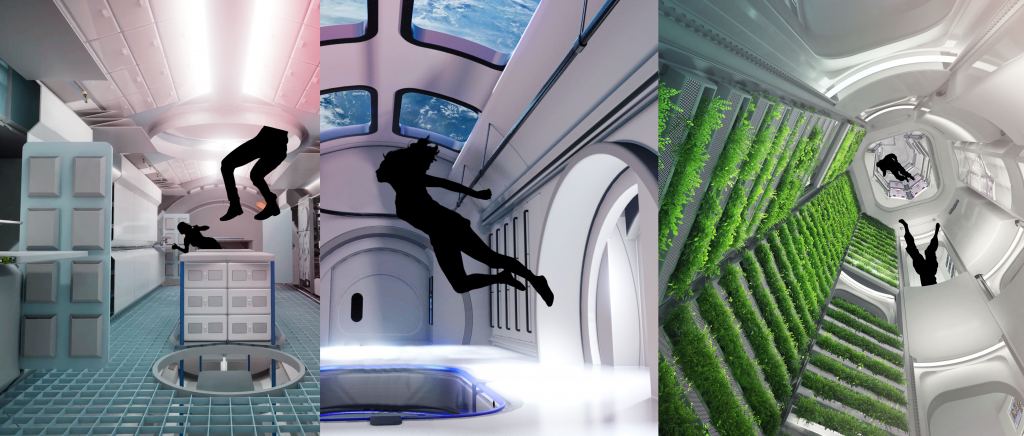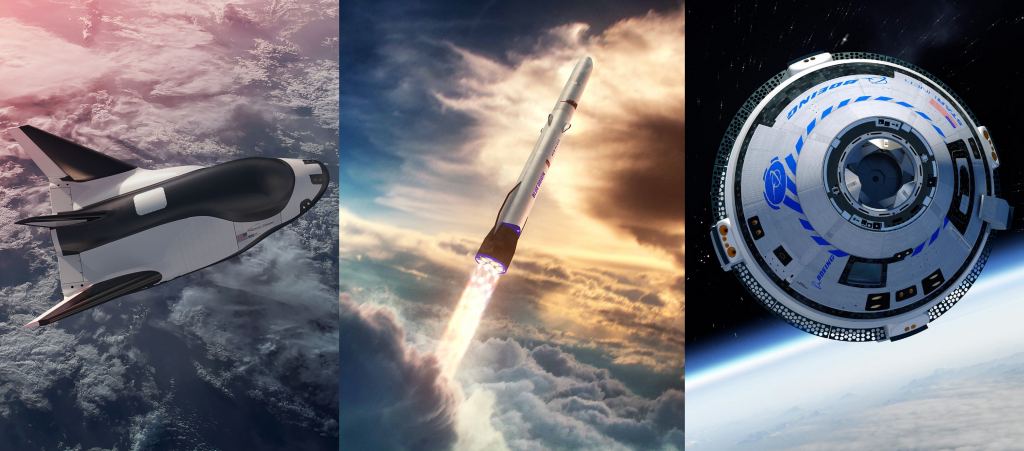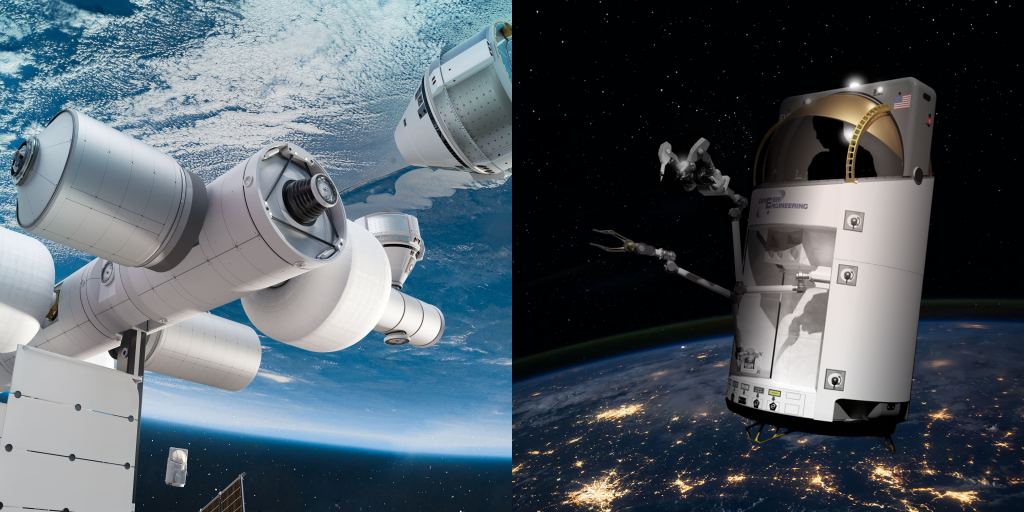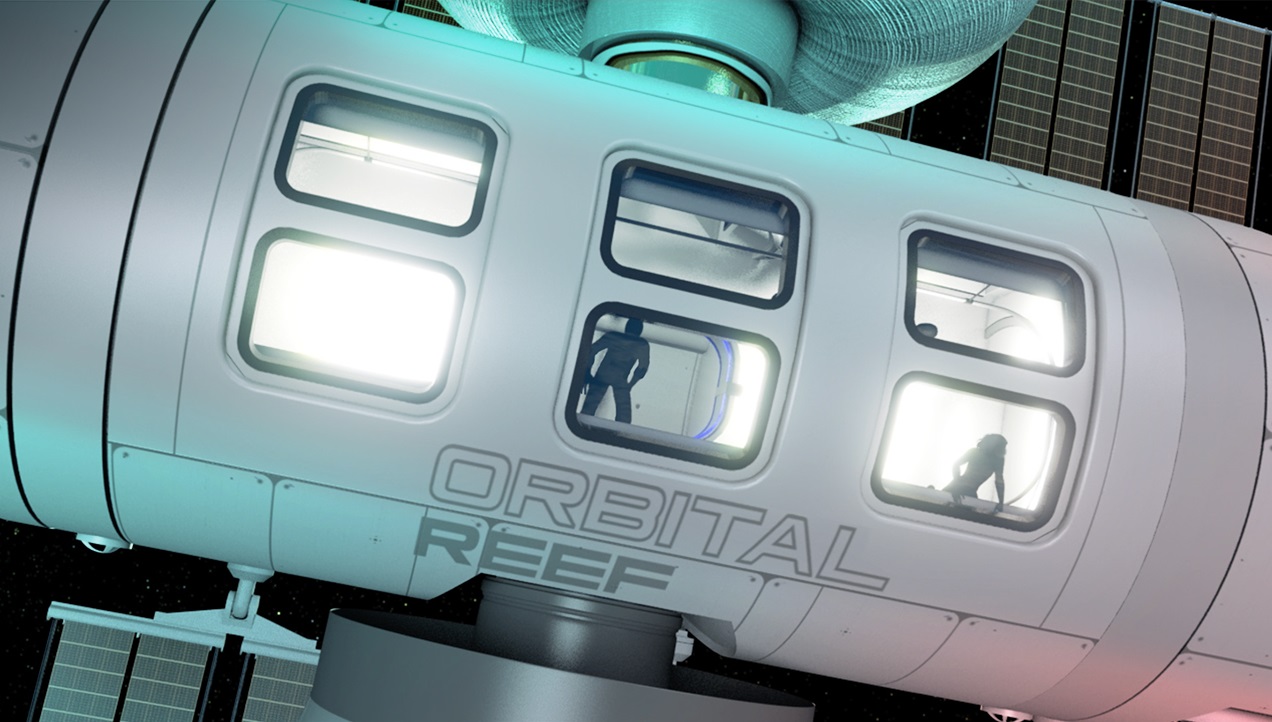Blue Origin has certainly stepped up its game of late! After stepping down as the CEO of Amazon, Jeff Bezos has made it his personal mission to take the company he founded in 2000 and turn it into a powerhouse of the commercial space sector. Between some high-profile missions involving the New Shepard – which included passengers like Wally Funk, William Shatner, and even himself and his brother – Bezos has also been outspoken about his long-term vision.
Bezos describes this vision as “building a road to space so our children can build the future.” In the latest step towards achieving this, Blue Origin announced a new partnership with Sierra Space to develop a commercial space station in Low Earth Orbit (LEO), known as “Orbital Reef.” This mixed-use space station, which is to be completed by the end of this decade, will facilitate commerce, research, tourism, and facilitate the commercialization of LEO.
Consistent with the goal of increasing access to space, the station is essentially a “business park,” where shared infrastructure supports the needs of many different users. This concept has been used as a business model on Earth for generations but is unprecedented where space is concerned. But given the growth of the commercial space sector in recent years, applying this same model to LEO will have the benefit of fostering this growth further.

The baseline configuration for this base consists of multiple science and habitation modules capable of supporting ten people in a space measuring 830 m3 (29,311 ft3) in volume. This is almost as large as the soon-to-be-retired International Space Station (ISS), with an interior volume of 915.6 m3 (32,333 ft 3). The design incorporates multiple berths, vehicle ports, utilities, and amenities to service multiple customers, as well as many large, Earth-facing windows that provide visitors with a beautiful view of Earth from space.
As a cutting-edge commercial destination in LEO, the Orbital Reef’s ultimate purpose is to provide the essential infrastructure to scale economic activity and open new markets in space. By combining reusable space transportation, smart design, advanced automation, and logistics, the station will minimize the cost and complexity for companies currently operating in space and new arrivals – like commercial space companies, government research institutes, or private institutes.
In addition to Blue Origin and Sierra Space, the Orbital Reef project is backed by space industry leaders like Boeing, Redwire Space, Genesis Engineering Solutions, and Arizona State University (ASU). Blue Origin will be responsible for providing the station’s core modules and utility systems and launch services provided by the reusable New Glenn heavy launch systems. As Brent Sherwood, the Senior Vice President of Advanced Development Programs for Blue Origin said in a company press statement that accompanied the announcement:
“For over sixty years, NASA and other space agencies have developed orbital space flight and space habitation, setting us up for commercial business to take off in this decade. We will expand access, lower the cost, and provide all the services and amenities needed to normalize space flight. A vibrant business ecosystem will grow in low Earth orbit, generating new discoveries, new products, new entertainments, and global awareness.”

Sierra Space (formerly Sierra Nevada) will provide the Large Integrated Flexible Environment (LIFE) module, the node module, and crew and cargo services using their reusable Dream Chaser spaceplane. Said Dr. Janet Kavandi, a three-time former astronaut with NASA and the president of Sierra Space:
“Sierra Space is thrilled to partner with Blue Origin and provide the Dream Chaser spaceplane, the LIFE module and additional space technologies to open up space for commercial research, manufacturing, and tourism. As a former NASA astronaut, I’ve been waiting for the moment where working and living in space is accessible to more people worldwide, and that moment has arrived.”
Boeing will provide the station’s Science module, oversee station operations, maintenance engineering, and transportation with their CST-100 Starliner reusable crew spacecraft. Redwire Space, an international developer, headquartered in Jacksonville, Florida, will contribute deployable structures and the components for payload operations, microgravity research and development, and manufacturing.
Genesis Engineering Solutions, a Maryland-based aerospace company, will provide the Single Person Spacecraft (SPS) for routine operations and tourist excursions. “The Single-Person Spacecraft will transform spacewalking,” said Brand Griffin, Program Manager for Genesis Engineering Solutions. “Space workers and tourists alike will have safe, comfortable, and quick access outside Orbital Reef. Shirtsleeve environment, great visibility, automated guidance, and advanced precision manipulators will make external operations cost-effective and routine.”

ASU, meanwhile, will rely on its global consortium of universities to provide research advisory services and public outreach. Said Lindy Elkins-Tanton, the Vice President of ASU’s Interplanetary Initiative and Principal Investigator of the NASA Psyche mission:
“ASU’s Interplanetary Initiative is honored to be leading the university consortium that is supporting Orbital Reef. We’ve brought together an international group of more than a dozen universities to work on the ethics and guidelines of research — on how we can bring to bear all our expertise in science and research and manufacturing in low gravity, to help nations, corporations and groups that want access to Orbital Reef. It’s about collectively believing in our future and bringing science and engineering to bear on a better future – hugely exciting.”
More than a dozen leading academic institutions are part of the Interplanetary Initiatives, all of whom have expertise in space and microgravity research. This ASU-led initiative is also part of the Orbital Reef University Advisory Council, which will focus on the needs of the academic community, stimulate research, advise novice researchers, develop standards of conduct, and lead STEM outreach.
Another purpose for the Orbital Reef is to fill the gap left by the impending retirement of the ISS, which is currently approved to operate until the end of 2024 (with a possible extension to 2028). As a result, NASA and other agencies are considering potential replacements, which led to NASA unveiling of NASA’s Commercial LEO Destinations project earlier this year. This program will award $400 million in contracts to up to four companies by the end of the year, and major companies like Blue Origin, Airbus, Boeing, SpaceX, and Lockheed Martin have all expressed interest.

“This is exciting for us because this project does not duplicate the immensely successful and enduring ISS, but rather goes a step further to fulfill a unique position in low Earth orbit where it can serve a diverse array of companies and host non-specialist crews,” said John Mulholland, Boeing VP, and program manager for the International Space Station. “It calls for the same kind of expertise we used to first design and then build the International Space Station and the same skills we employ every day to operate, maintain and sustain the ISS.”
The Orbital Reef is not the only commercial concept for a space station in LEO. In recent years, Bigelow Aerospace has also been developing inflatable space modules, with the ultimate goal of using them to create a fully-functional commercial space station in orbit. Then there’s the Gateway Foundation, which is currently developing their Voyager Class station, a rotating pinwheel structure designed to produce varying levels of artificial gravity.
The Gateway Foundation’s efforts also extend to creating the necessary infrastructure in orbit to facilitate orbital construction, which led to the creation of the Orbital Assembly Corporation (OAC). The International Space Elevator Consortium (ISEC) also hopes to leverage advancements made in super-materials (particularly single-crystal graphene) to fulfill the dream of building a space elevator.
It’s no secret that Blue Origin has lost considerable ground to SpaceX and other commercial space companies in recent years. This was the reason why Bezos has chosen to focus his attention on his fledging space company, which he hopes will become an industry leader in the “new space age.” By putting the development of rockets like the New Shepard and New Glenn back on track and partnerships to create commercial stations in LEO, Blue Origin may become SpaceX’s most fearsome rival in this new age!
And be sure to check out this video that details the Orbital Reef concept, courtesy of Blue Origin:
Further Reading: Blue Origin, Orbital Reef


I expect the minimum 15% global corporation tax won’t apply to off-globe companies.
I suppose we can always impose a 15% import duty!
The video describes Blue Origin & Sierra Space as supplying transportation & orbital facilities as though they are already doing so. Blue Origin, beyond 15-minute, sub-orbital, celebrity hops, has yet to actually get anything into orbit. Sierra describes its spaceplane Dream Chaser as “selected by NASA to provide cargo delivery, return, and disposal service for the space station.” Will it get into space before the ISS is retired?
As for a “business park” in space, it sounds like an expensive & exhausting commute just to sit at a computer & make phone calls in orbit. Will the nausea, swelling, exposure to radiation, budding osteoporosis, bad food, and misfiring bodily functions be worth the novelty beyond the first hour at one’s desk? Instead of a fanciful business park, it would be much more practical to be utilized as a research station as the ISS is now, then possibly built up as a way station or space dock. I suppose Blue Origin’s fat phallus rockets WILL get something into orbit, eventually.